Contents
Airtable vs. Asana: Detailed Comparison (Features, Pricing)
By Shyamal ParikhSep 30, 2024

Deciding between Airtable and Asana isn’t easy.
Airtable excels at data-centric tasks, while Asana focuses on core project management features. But which is the right fit for your team? Which is more cost-effective? And which one packs everything you need onto a single platform?
Let’s try to find out in this Airtable vs. Asana comparison – where we’ll dissect their features, pricing, strengths and weaknesses — and even introduce an alternative to help you make the right choice.
Fast Facts: Airtable vs Asana in 2025
Airtable - All-In-One Database Management Solution
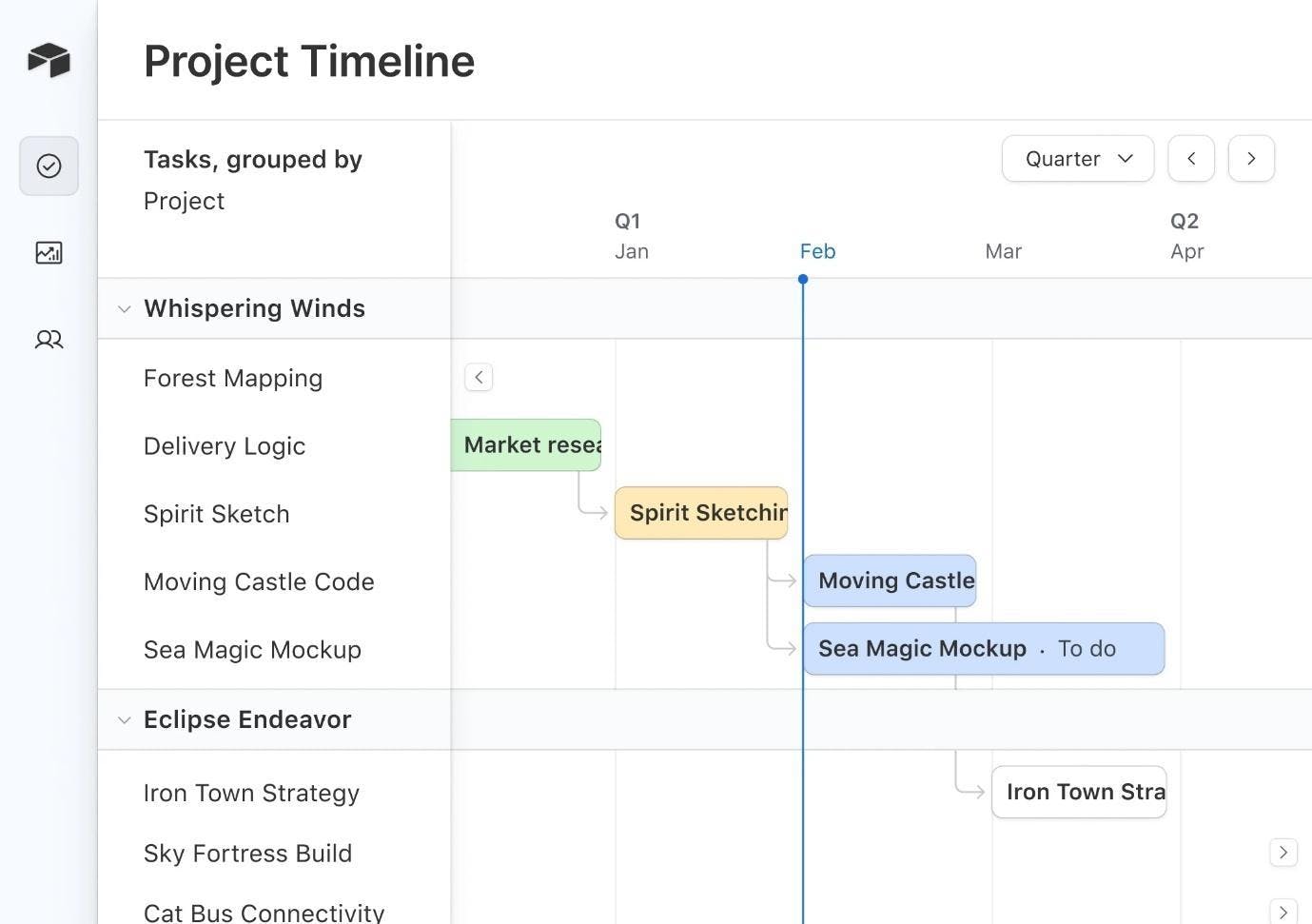
Airtable is a powerful work management platform that combines the simplicity of spreadsheets with database capabilities, enabling teams to efficiently organize, share, and analyze information.
Airtable Key Features
- Customizable project views, including Grid, Calendar, List, and Timeline
- Feature-packed tasks -- with due dates, priorities, and attachments
- Commenting, tagging, and activity history tracking for collaboration
- Automations for recurring tasks (learn more about its automation)
- Interface Designer for creating custom dashboards
- Airtable Cobuilder for creating custom apps
What Users Say About Airtable?
Airtable holds an average rating of 4.65 from over 4,000 reviews on G2 and Capterra, with high praise for its ease of use and flexibility.
Users love its customizable interface, which lets them visualize data their way. They also find it extremely helpful for tracking projects, creating resource repositories, and viewing content analytics.

However, some users feel Airtable’s reporting tools are too basic, and its built-in automation features a bit restrictive. A few users have also criticized Airtable's support for its sluggish response times.
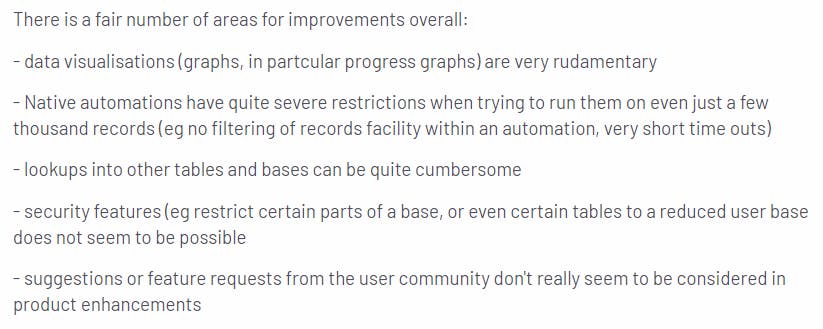
Why Consider Airtable Over Asana?
- Custom databases with various field types and views
- Flexible interface
- Data models for specific use cases
- No-code app builder
Asana - Work Management Designed for Scale
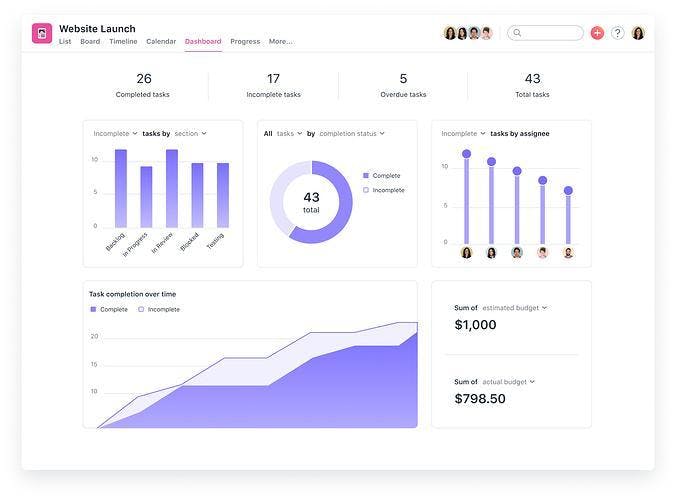
Trusted by nearly 85% of Fortune 100 companies, Asana helps teams organize and track projects, automate routine processes, and align their work with company goals.
Asana Key Features
- Multiple work views, including list, board, and calendar
- Subtasks, priorities, and dependencies for complex projects
- Custom fields to sort and filter tasks
- No-code custom workflows and automation
- Basic reporting on tasks, goals, and projects
- Asana AI for automating tasks and querying databases
What Users Say About Asana?
Asana holds an average rating of 4.5 from over 22k reviews on G2 and Capterra, with stellar reviews for its task management features.
Users like Asana's ability to create detailed tasks with due dates, attachments, and dependencies, facilitating easier project management. They also value its extensive integration options, which connect seamlessly with their existing tech stack.
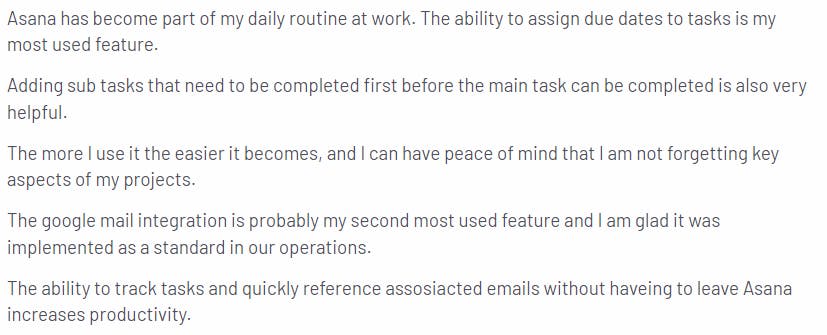
However, some users have reported a clunky mobile app experience and a steep learning curve for new users.

Why Consider Asana Over Airtable?
- User-friendly interface
- Robust task management features
- Offers 250+ integrations
- Has built-in resource management and capacity planning tools
- More automation features
Feature Face-Off: How Airtable and Asana Measure Up
Now that you know what Airtable and Asana offer, let’s compare them head-to-head, focusing on their user experience, task management, and collaboration features, as well as their pricing:
User Experience
Airtable can be tricky for beginners. It has a steep learning curve and can overwhelm users with its complex interface and advanced features:

Asana, on the other hand, is more user-friendly -- but still has a bit of a learning curve due to its numerous features.
Task Management
Airtable is a database tool that organizes data or tasks in a spreadsheet-like format. It has subtasks, task priorities, custom fields, and dependencies for advanced task management.
That said, you can only leverage these features up to the storage limit of your subscription plan. For instance, lower-tier plans offer only 1,000 to 50,000 records per base, which can quickly become restrictive for larger projects.

Asana, in contrast, is more project management-focused and has everything you need to create a structured workflow—like tasks, subtasks, dependencies, custom fields, and milestones. It's also quite generous with its task management features, offering unlimited projects, tasks, and activity logs on every tier.
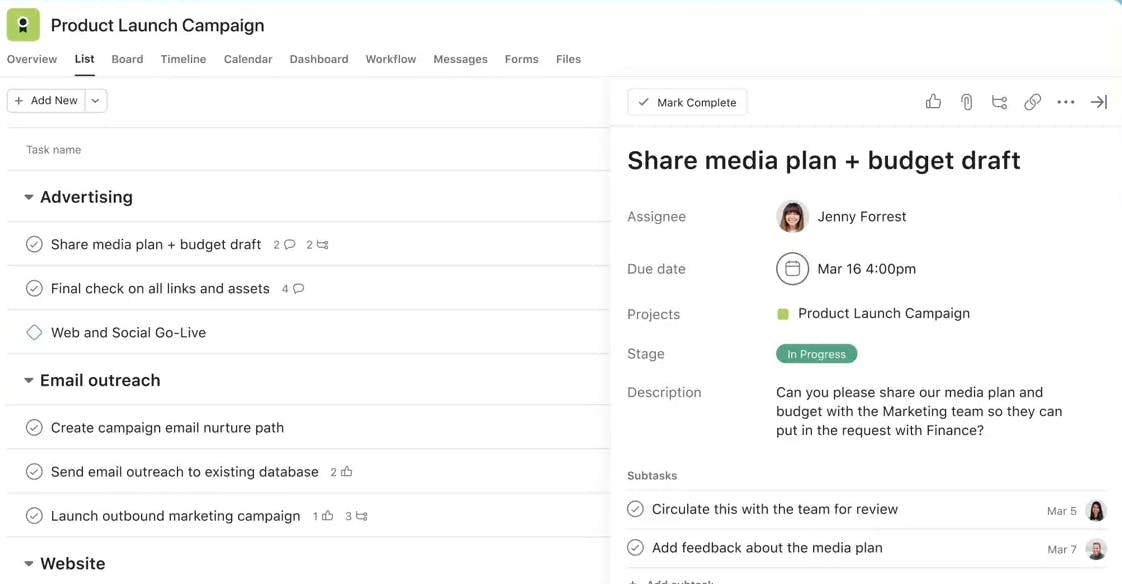
P.S.: See how Airtable and Asana compare to the best task management tools
Time Tracking and Resource Management
Airtable offers a time-tracking app that captures basic time-spent data but lacks advanced reporting features.
As for resource management, Airtable doesn't have a built-in solution, but it does have a comprehensive Timeline view that can help you visualize total team and individual working hours and plan your headcount
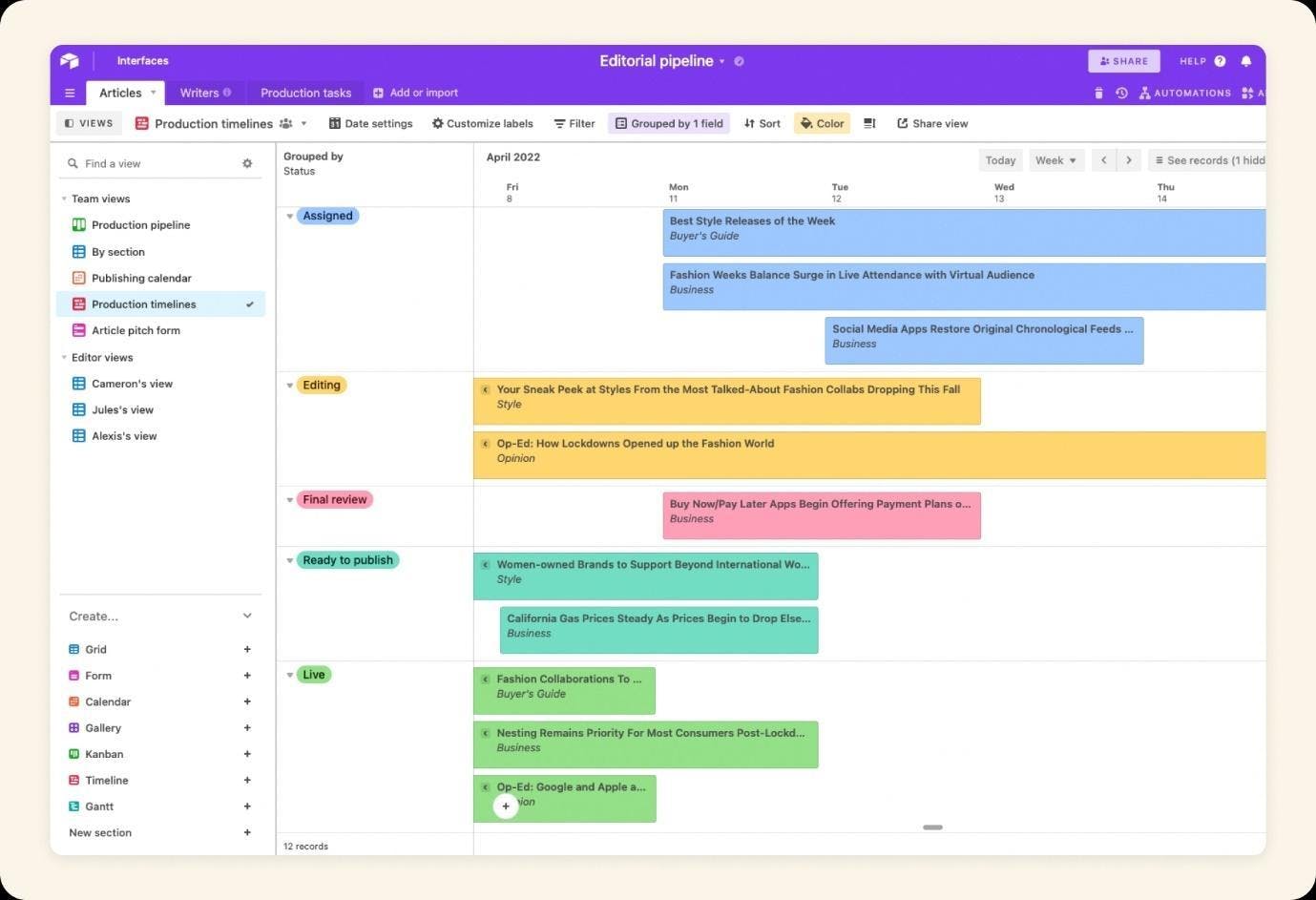
Asana's time tracking is more advanced and allows you to estimate task duration, log work hours, and review time spent on tasks.
It's also better for resource planning and allocation, as it can visualize your team's capacity and align resources with company goals.
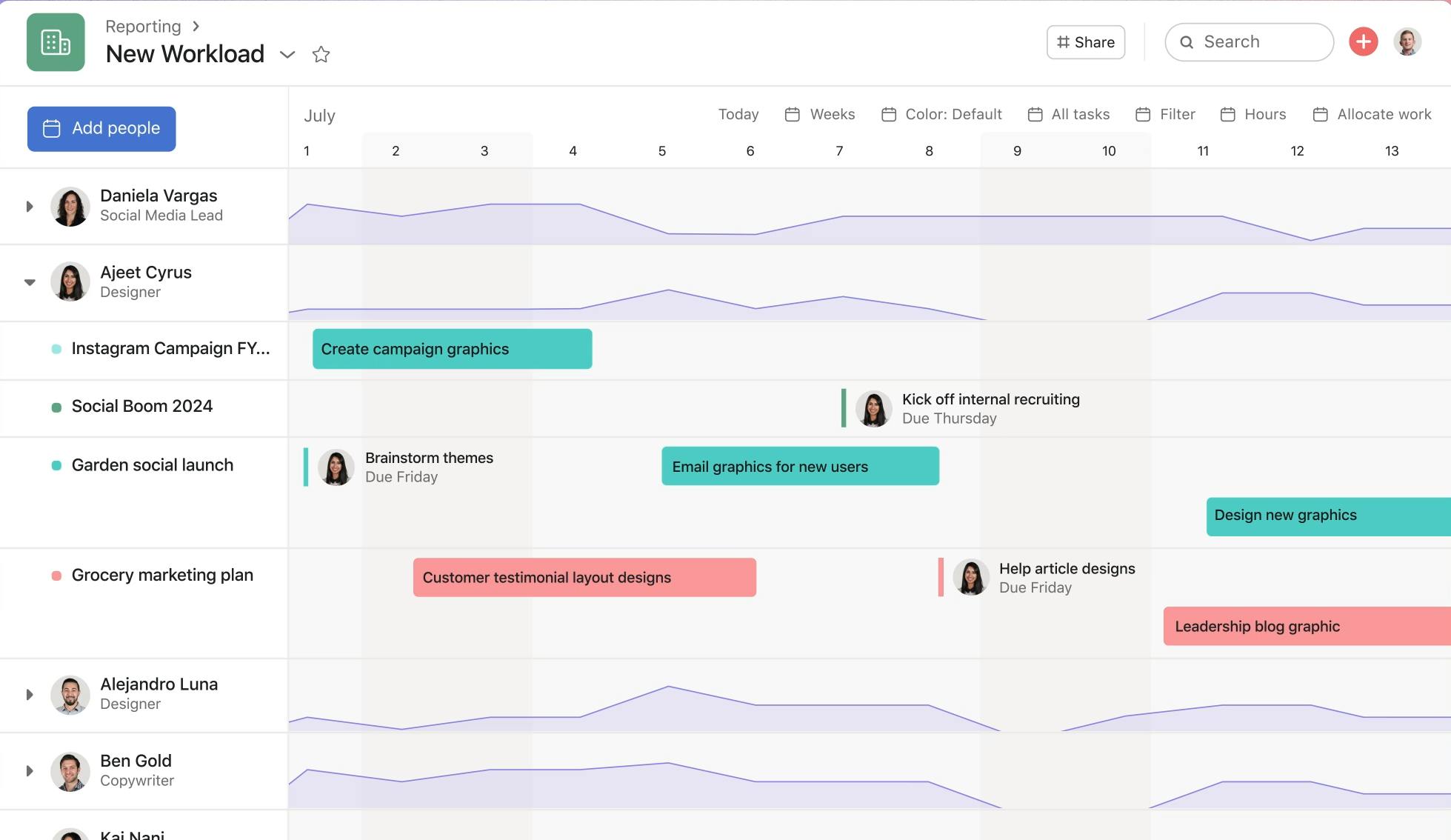
P.S.: Check out this list of the best resource management tools for more alternatives
Reporting and Analytics
While Airtable offers some useful reporting capabilities, they fall short in depth and customization. They're also insufficient for tracking your team's performance.
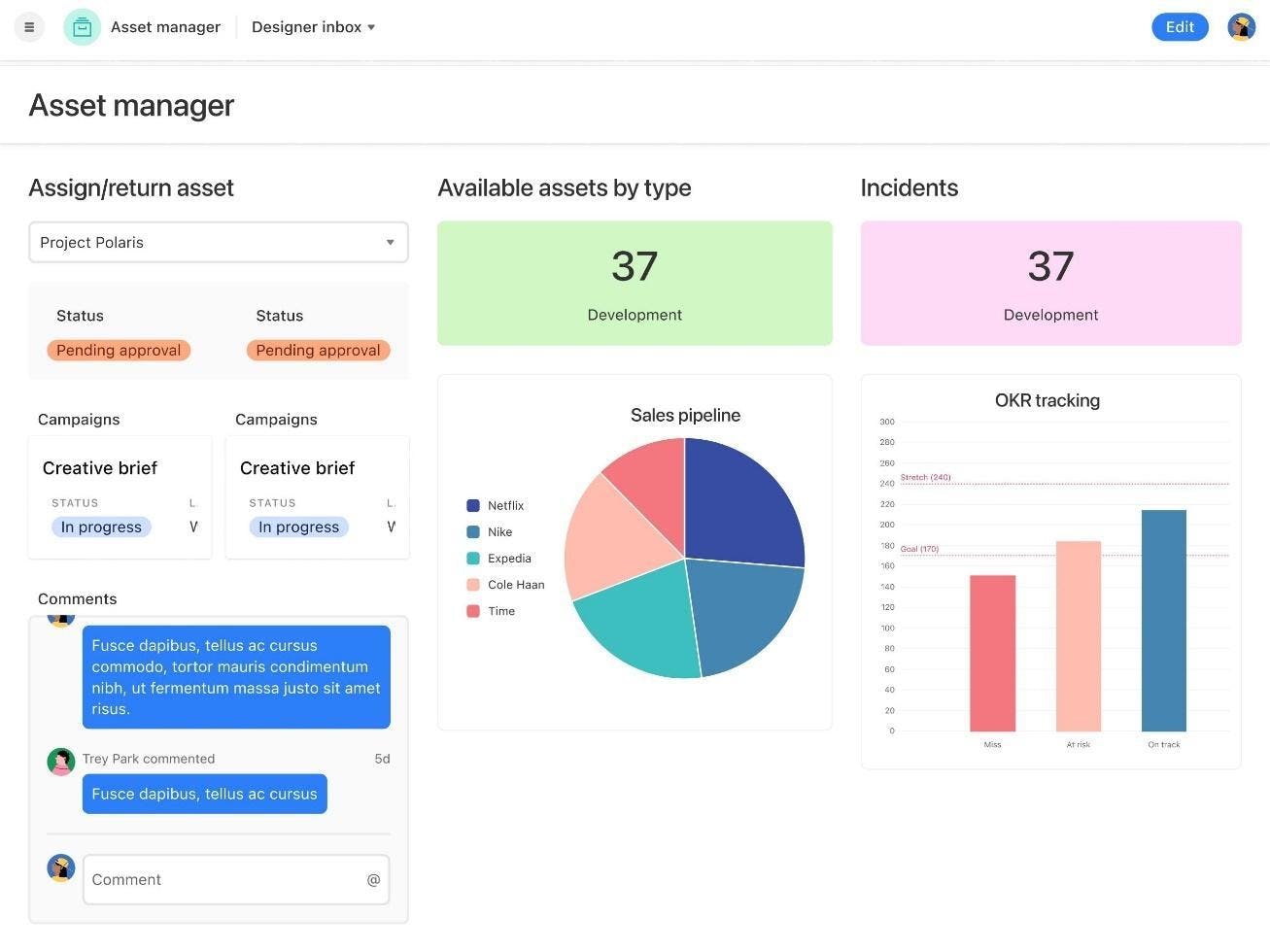
Asana's reporting capabilities, while also basic, offer some advantages over Airtable. Although reports can’t be downloaded in PDF or Excel formats (you’re limited to screenshots), Asana offers customizable reporting templates. It also supports various chart types, like line and burnup charts, to improve data visualization.
Collaboration
As a data-centric tool, Airtable lacks collaboration features like chats, whiteboards, and automated check-ins. However, you can still tag team members on tasks, add comments, and share dashboards and reports.

Asana's collaborative features are also limited to task comments and tagging team members -- forcing users to rely on plugins like Slack and Google Chat+.
Customer Support
Airtable's customer support tends to be slow -- with most issues being handled over email. Some users have expressed concerns about the quality of the information provided, noting instances of generic or irrelevant responses.

Asana's customer support is also a mixed bag. Some users find it great, while others feel the quality needs improvement, especially for lower-tier plans.

Pricing
Airtable has straightforward per-user-per-month pricing. However, the features in each plan are restricted, making it more suitable for smaller workflows than more complex ones.
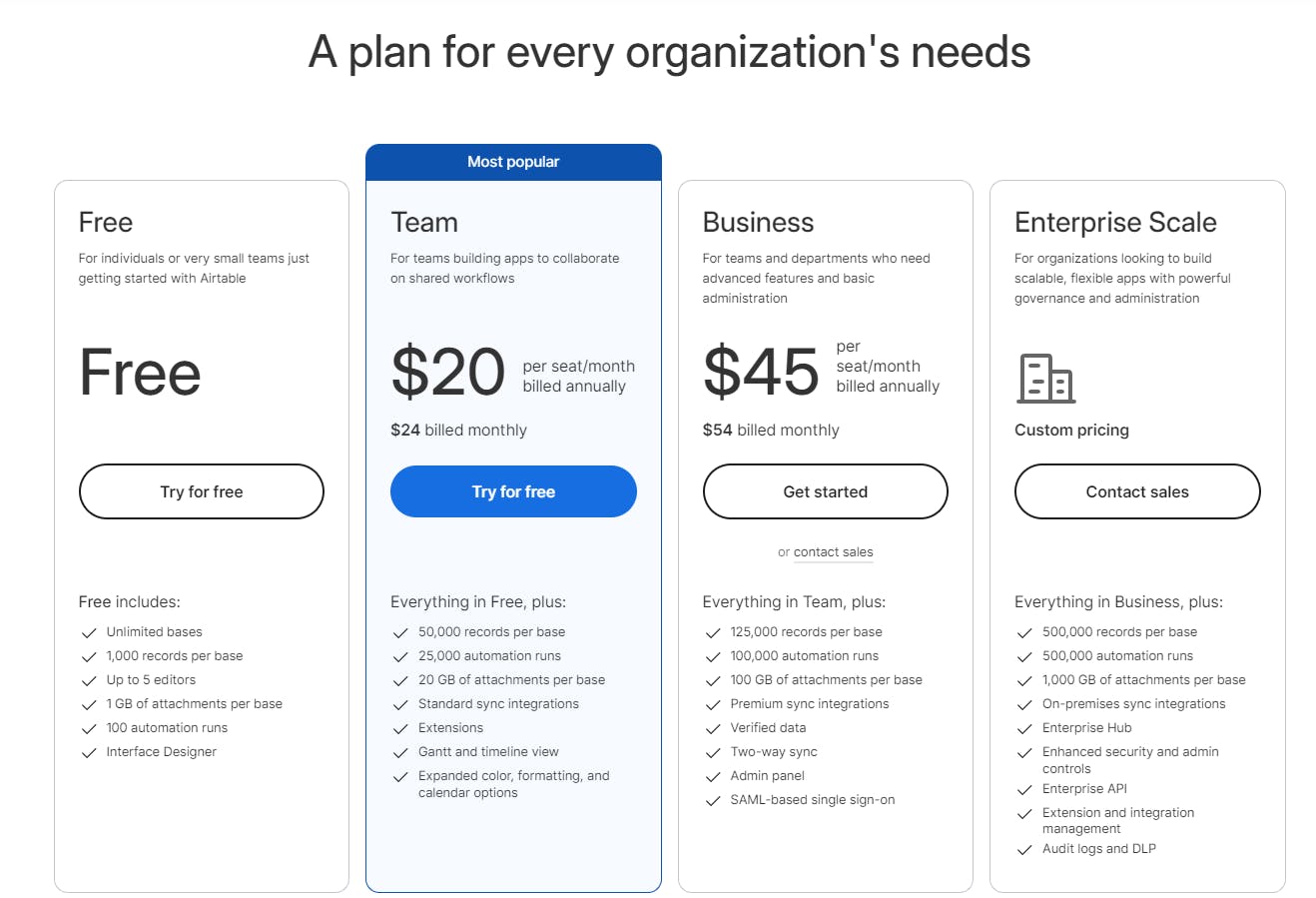
Asana's starting price is more accessible. However, if you factor in the costs of plugins and adding more team members, it can get pretty expensive -- especially for growing businesses.
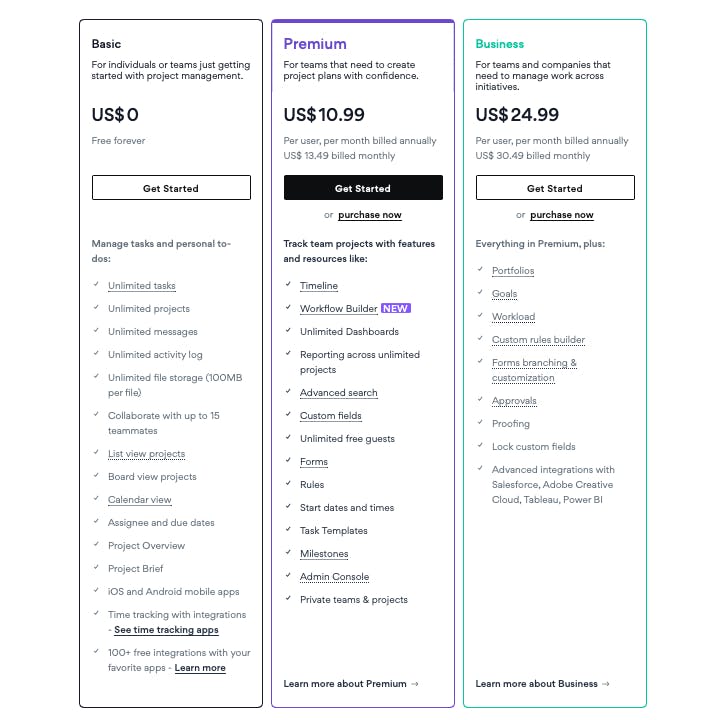
Admin Controls and Customization
Airtable offers more customization options than Asana. However, the ability to add/remove users or restrict user access is limited to enterprise plans.
Asana, on the other hand, has more integration options. As for user access control, Asana follows a similar approach to Airtable, offering these features only to Business and Enterprise users.
SmartTask: A Better Alternative to Airtable and Asana
While Airtable and Asana are useful tools, they have limitations. Airtable is primarily a data management app with limited project management features, while Asana lacks customization options.
They also lack robust time-tracking, resource planning, and client management features -- which are indispensable for professional service businesses like agencies and consultancies. An alternative that addresses these gaps is SmartTask, an all-in-one project management tool that offers:
- Advanced reporting tools
- Built-in chat and video calling
- Robust time-tracking with timesheets
- A native CRM for streamlining your sales pipeline
Let's take a closer look at its features:
- Multiple project views: SmartTask allows you to view your work in four different formats, including List, Calendar, Kanban, and Gantt chart — available in all tiers, including the free plan.
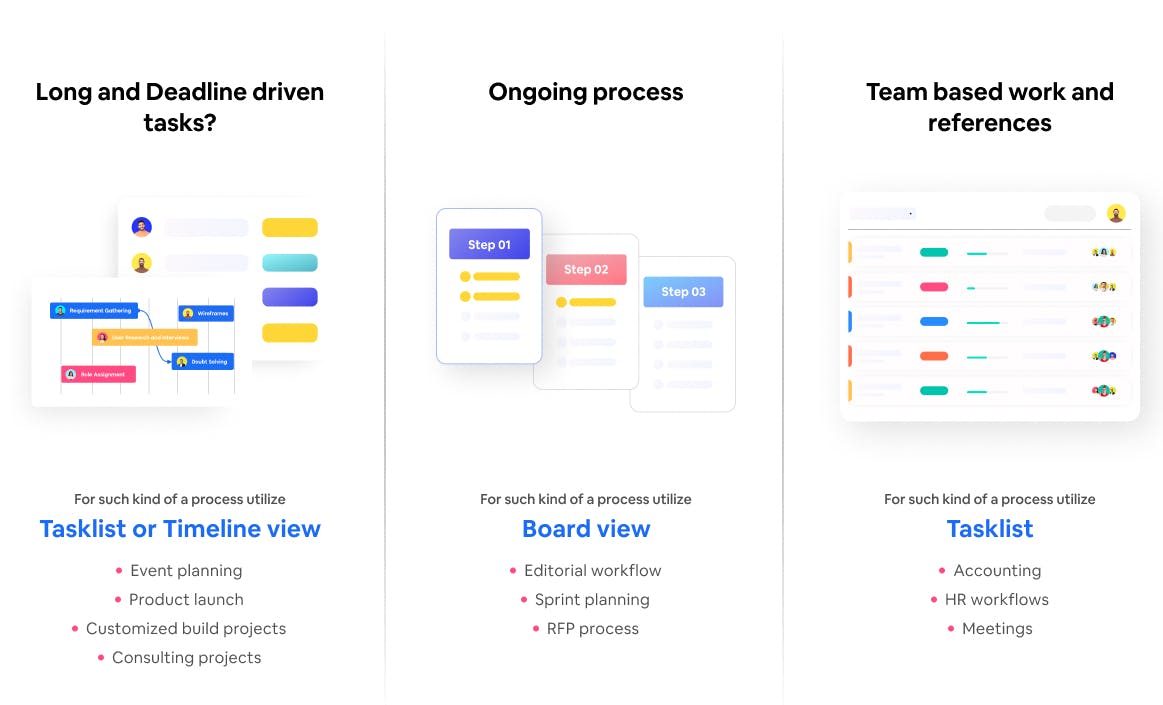
- Task management: SmartTask’s feature-rich task management has everything you need, including subtasks, dependencies, and custom fields. Each task has a rich-text editor for detailed descriptions, and you can tag team members, add comments, view activity history, log work hours, set priorities, and even make video calls—all within the task.
- Advanced reporting tools: SmartTask offers standout advanced analytics. Unlike Asana and Airtable, it lets you filter data with advanced search, create custom reports and data visualizations, and stack multiple projects together for progress tracking.
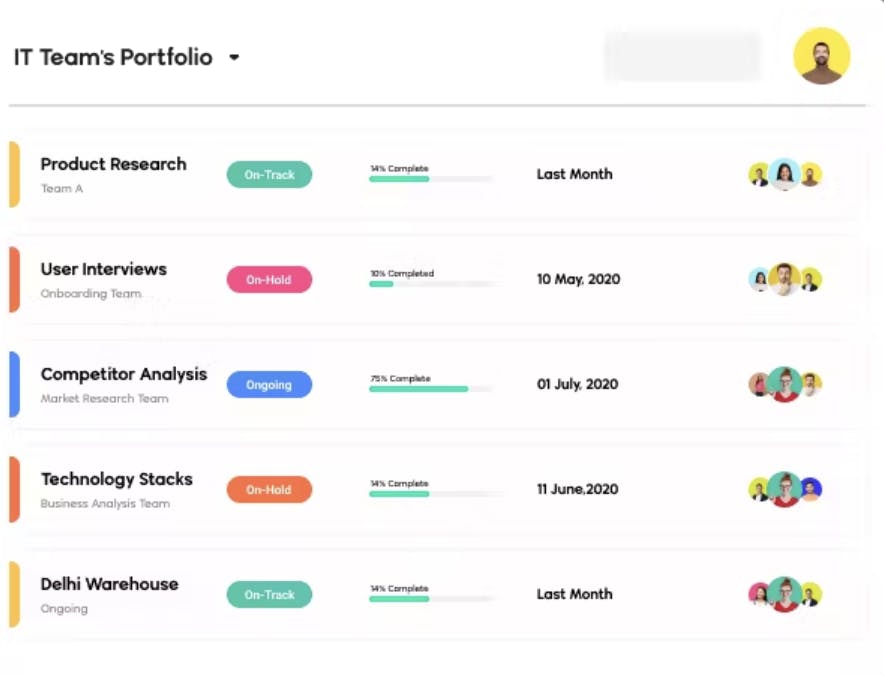
- Built-in time tracking: SmartTask offers native time-tracking features that allow you to monitor your team's daily and weekly activity logs, estimate the time duration for each task, and generate overviews to track billing, resource usage, and costs. You can also export this data to other tools, like Google Data Studio (GDS), for granular analysis.
- Resource management: SmartTask offers comprehensive resource planning tools that allow you to monitor real-time resource usage, account for team members' availability, and allocate resources to projects accordingly.
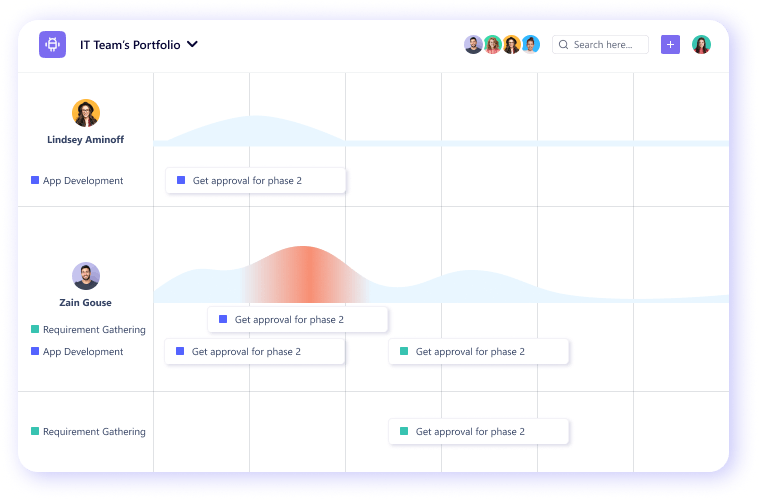
- Project cost estimation: SmartTask lets you estimate project costs, budgets, resources, and billable hours.
- Built-in chat and video calling: When it comes to collaboration, SmartTask outshines both Asana and Airtable. It offers real-time chat, video calling, project feeds, task comments, and automated check-ins to enable seamless team collaboration.
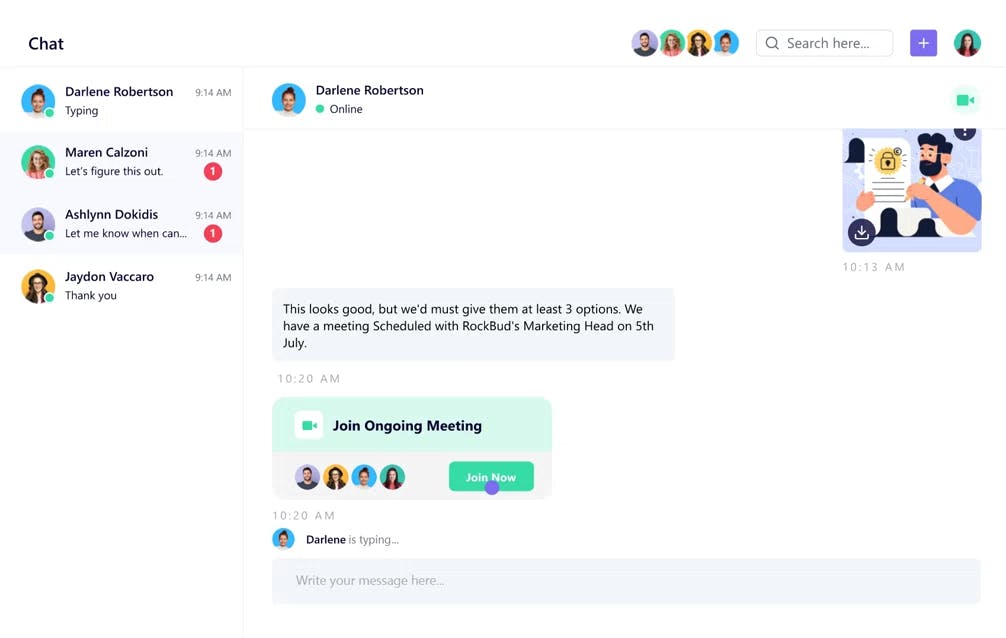
- Built-in CRM: SmartTask has a built-in CRM that lets you track leads (from inquiries to closed deals), store contacts, record client calls (for training and analysis), monitor team performance, and predict quarterly sales using a live dashboard.
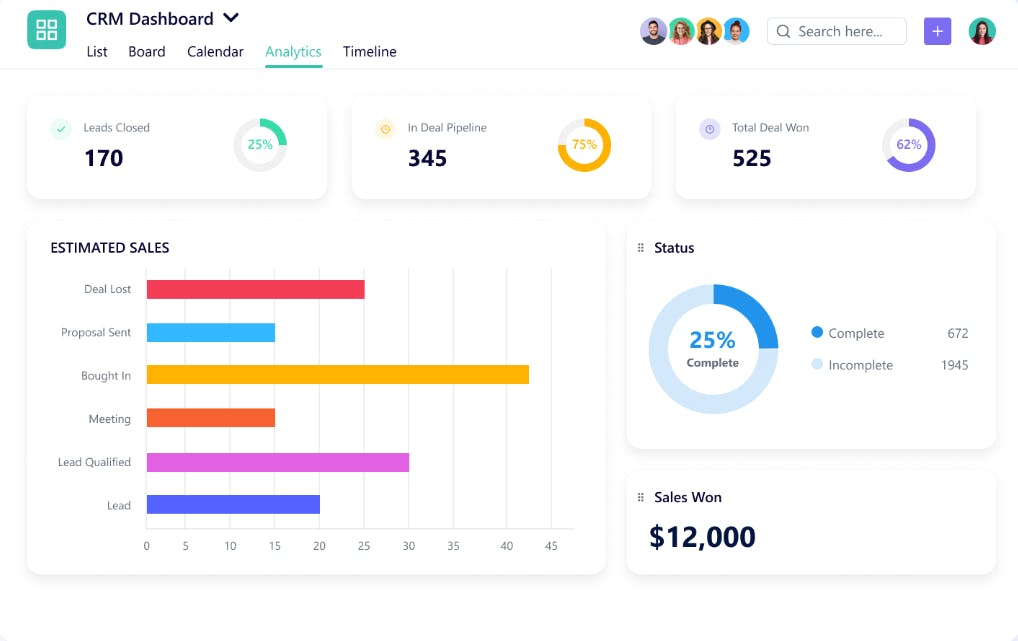
- Client Portal: Another standout feature of SmartTask is the client portal, which centralizes client approvals, meeting notes, and files, ensuring everyone stays on the same page.
Apart from the above features, SmartTask offers 1000+ integrations. And the best part? All of SmartTask’s robust features are available at an accessible. It also has a generous free tier that offers unlimited projects, tasks, and contacts.
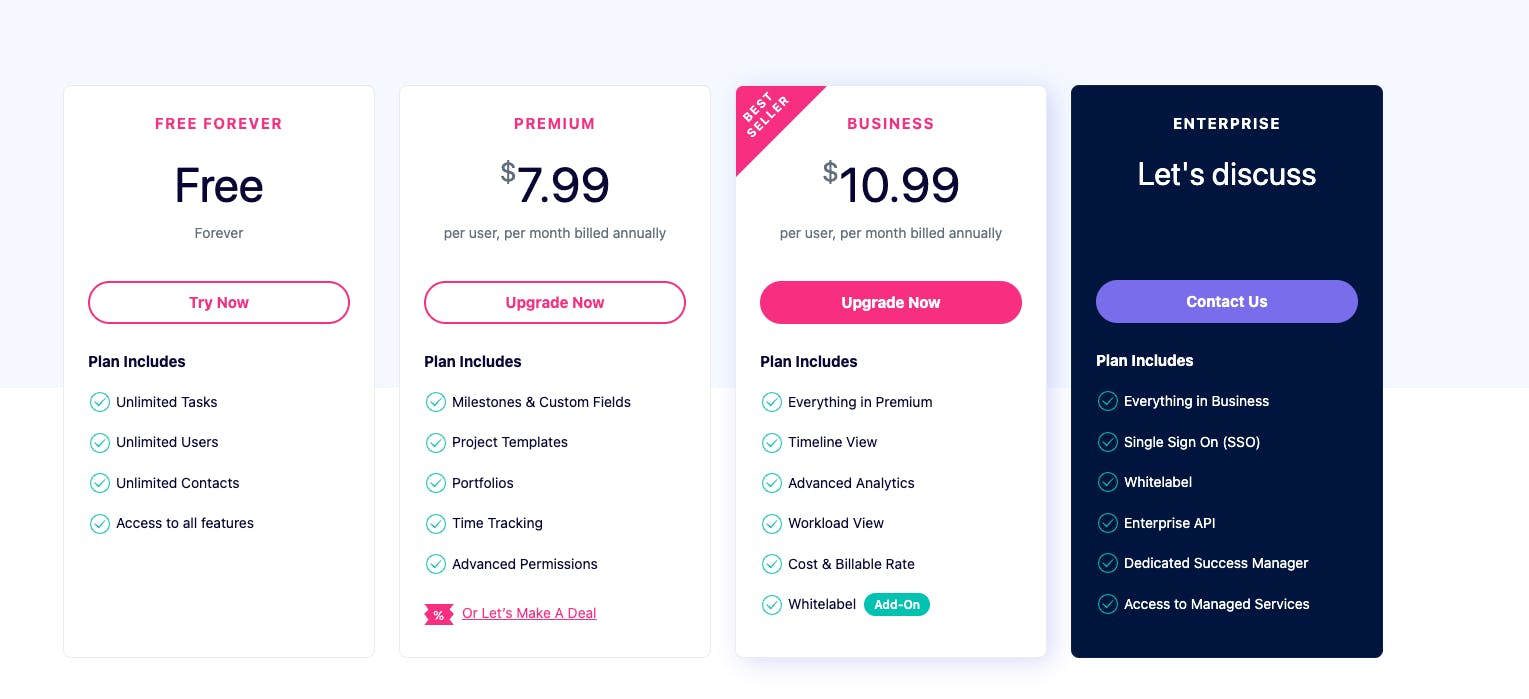
Asana vs. Airtable: Which Tool Wins In 2025?
Airtable and Asana are both popular work management tools, each with its own strengths.
One makes it easy to manage data with customizable records, while the other offers seamless task management.
But what if you want a tool that combines the best of both — and then some? Enter SmartTask. It not only offers advanced task and resource management but also includes powerful analytics, built-in chat and video calling, CRM, and a client portal.
And that’s just the beginning. SmartTask is packed with features you’ll want to explore. So, why not give it a try? Sign up today—it’s free!
Frequently Asked Questions (FAQs)
1. Which tool offers a better mobile experience: Airtable or Asana?
Based on user reviews, Asana’s mobile app isn’t user-friendly. On the other hand, Airtable’s mobile app has mixed reviews. While a few users praise its functionality and customization features, others report challenging navigation, missing extensions and automations, and technical glitches.
2. Can you integrate Asana with Airtable?
Asana does not integrate with Airtable. However, if you’re an Airtable user, you can integrate the tool with Asana to sync your data, automate tasks, and customize workflows.
💡You Might Also Want to Check Out:-
👉 Notion for Project Management - A Complete 2025 Guide




